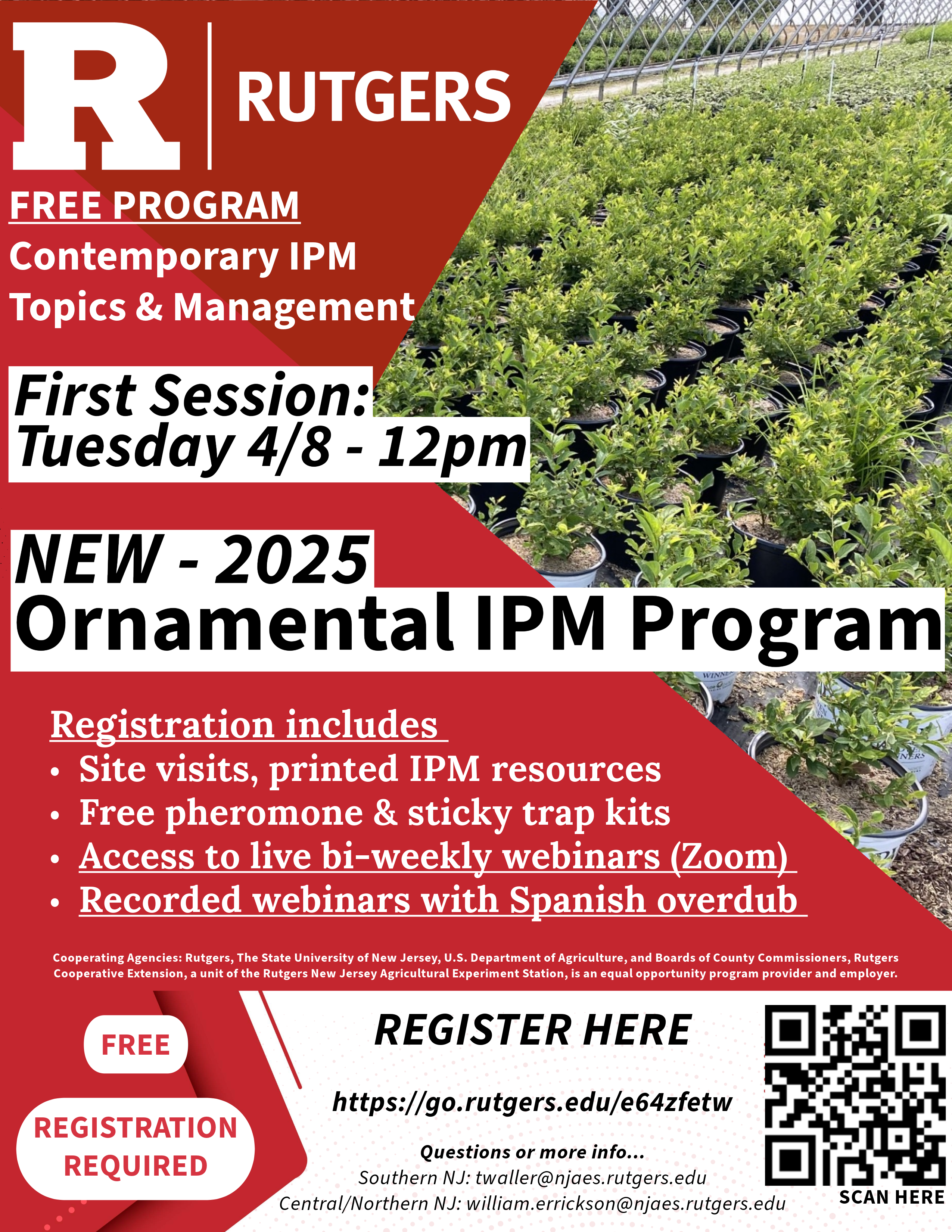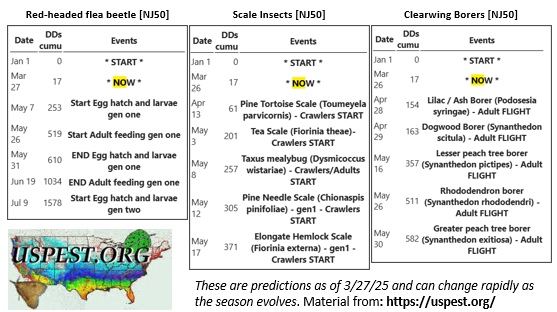
Please consider signing up for the NEW 2025 – Rutgers Ornamental IPM Program.
The focus of this program is to provide timely updates on pest, disease, and weeds impacting commercial ornamental producers. The webinars will focus on the most important pests for a 2 week interval, will be recorded, and will be shared shortly thereafter with Spanish overdub (spoken word). The trap packages are in an effort to find grower led solutions for monitoring economically important pests throughout the multiple regions of New Jersey. Please consider joining this program for its inaugural year.
Registration includes:
- Site visit to your ornamental nursery/farm from Rutgers agents
- Delivered printed IPM resources (Guides, factsheets, bulletins)
- Free pheromone & sticky trap kit + guidance on setup/monitoring
- Access to live bi-weekly webinars (Zoom)
- (First session NEXT TUESDAY 4/8 @ 12PM)
- Every Second and Fourth, Tuesday, April through September
- Webinars will be recorded – posted later with Spanish overdub
This program is free, however registration is required.
| Boxwood Blight Risk Assessment as of 3/4/2025 | |||||||||
| Region | Location | CODE | 31-March | 1-April | 2-April | 3-April | 4-April | 5-April | |
| Southern | Upper Deerfield | NJ50 | Very Low | Very Low | Very Low | Low | Minor Risk | Very Low | |
| Central | Howell / Freehold | NJ10 | Minor Risk | Very Low | Very Low | Low | Minor Risk | Very Low | |
| Northern | Wantage | NJ79 | Low | Very Low | Very Low | Low | Risk | Very Low | |
| M | T | W | TH | F | S | ||||
| Please check YOUR LOCAL risk (click here) | |||||||||

Please download and print the Rutgers Nursery and Landscape Pest Scouting Guide or Conifer and Christmas Tree Pest Scouting Guide and refer to this post “Obtaining your local growing degree-days (GDD)” for additional information. (See pest scouting guides for complete list of references)
Please SHARE what you SEE!! If you see a pest, disease, otherwise interesting or troublesome issue please report it to the Working Group by following the QR Code on the front of the Pest Scouting Guides or by filling out this reporting form.
Keep reading for more resources!
